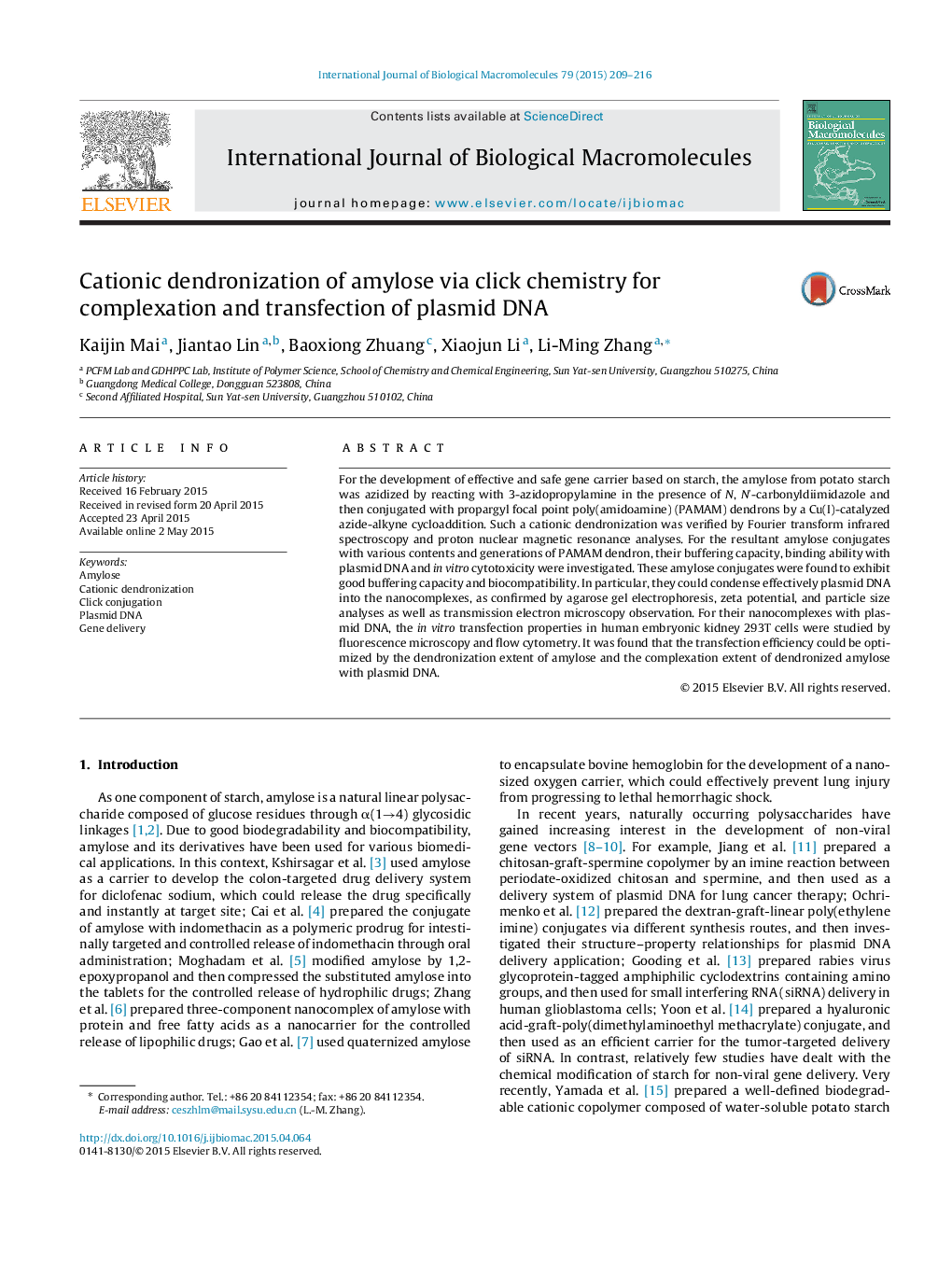| Article ID | Journal | Published Year | Pages | File Type |
|---|---|---|---|---|
| 8330983 | International Journal of Biological Macromolecules | 2015 | 8 Pages |
Abstract
For the development of effective and safe gene carrier based on starch, the amylose from potato starch was azidized by reacting with 3-azidopropylamine in the presence of N, Nâ²-carbonyldiimidazole and then conjugated with propargyl focal point poly(amidoamine) (PAMAM) dendrons by a Cu(I)-catalyzed azide-alkyne cycloaddition. Such a cationic dendronization was verified by Fourier transform infrared spectroscopy and proton nuclear magnetic resonance analyses. For the resultant amylose conjugates with various contents and generations of PAMAM dendron, their buffering capacity, binding ability with plasmid DNA and in vitro cytotoxicity were investigated. These amylose conjugates were found to exhibit good buffering capacity and biocompatibility. In particular, they could condense effectively plasmid DNA into the nanocomplexes, as confirmed by agarose gel electrophoresis, zeta potential, and particle size analyses as well as transmission electron microscopy observation. For their nanocomplexes with plasmid DNA, the in vitro transfection properties in human embryonic kidney 293T cells were studied by fluorescence microscopy and flow cytometry. It was found that the transfection efficiency could be optimized by the dendronization extent of amylose and the complexation extent of dendronized amylose with plasmid DNA.
Keywords
Related Topics
Life Sciences
Biochemistry, Genetics and Molecular Biology
Biochemistry
Authors
Kaijin Mai, Jiantao Lin, Baoxiong Zhuang, Xiaojun Li, Li-Ming Zhang,
